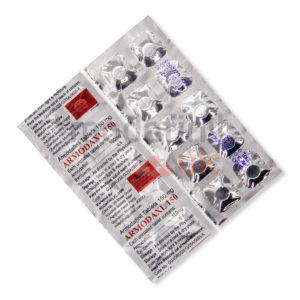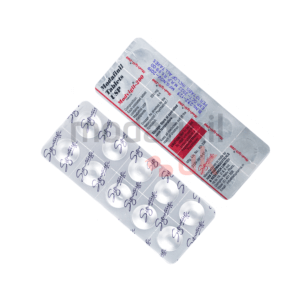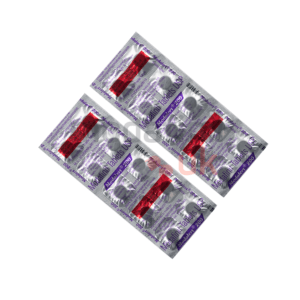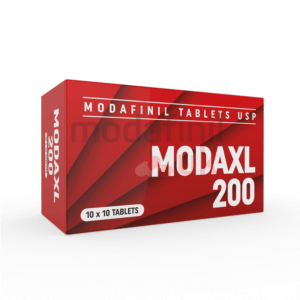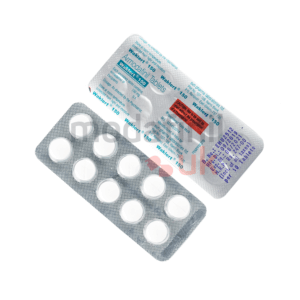What Is Modafinil Used For? Is It Effective for Studying and ADHD?
In an era where productivity is prized above all else, the search for ways to upgrade cognitive function and ameliorate mental performance is incessant. Amidst this pursuit, modafinil has emerged as a promising solution for those seeking to unlock their full potential. But what is modafinil used for? Often hailed as a “smart drug” or “cognitive enhancer,” modafinil is renowned for its ability to promote wakefulness and improve cognitive function. This guide delves into the various applications of modafinil, from its prescribed uses in treating sleep disorders like narcolepsy to its off-label uses for studying or treating conditions such as ADHD.
What Is Modafinil?
Modafinil, marketed under the brand name Provigil, is a drug that has garnered attention for its unique properties and diverse applications. Created in the 1970s by French neurophysiologist Michel Jouvet and Lafon Laboratories, modafinil was initially intended as a therapy for various sleep disorders. However, it wasn’t until the late 1990s that it gained widespread recognition & approval by regulatory agencies for its wakefulness-promoting effects.
Modafinil’s journey from laboratory discovery to pharmaceutical prominence is a fascinating tale of scientific innovation and perseverance. Initially synthesized as a derivative of adrafinil, it underwent extensive clinical trials to assess its efficacy and safety profile. Following successful trials, it was approved by the U.S. Food and Drug Administration (FDA) in 1998 for the treatment of sleep disorder conditions mentioned below [1].
Modafinil’s precise mechanism of action remains a subject of ongoing research. However, the med is thought to enhance the activity of certain neurotransmitters, such as dopamine, serotonin, orexin, histamine, and norepinephrine, which play crucial roles in regulating wakefulness and cognitive function.
Modafinil is now available in generic forms after the expiration of Provigil’s patent protection. Generics are bioequivalences to the brand-name drug and contain the same active ingredient while meeting rigorous standards set by regulatory agencies, ensuring that they are safe, effective, and of high quality.
Disorders for Which Modafinil Is Prescribed
The FDA approved Modafinil 200 mg for treating three specific sleep disorders: obstructive sleep apnoea (OSA), narcolepsy, and shift work sleep disorder (SWSD). These disorders can severely impact an individual’s quality of life and daily functioning, necessitating effective treatment options to manage symptoms and improve wakefulness.
OSA is a common sleep disorder characterized by repetitive episodes of partial or complete obstruction of the upper airway during sleep, leading to pauses in breathing and disrupted sleep patterns. Modafinil is prescribed to improve wakefulness and reduce excessive daytime sleepiness in people with OSA, helping them stay alert and functional throughout the day.
Narcolepsy is a chronic neurological disorder characterized by excessive daytime sleepiness, sudden episodes of muscle weakness or paralysis (cataplexy), hallucinations, and disrupted sleep patterns. Modafinil is effective in reducing daytime sleepiness and improving alertness in individuals with narcolepsy, allowing them to better manage their symptoms and maintain a more normal daily routine.
SWSD occurs when an individual’s work schedule conflicts with their natural circadian rhythm, leading to difficulties falling asleep or staying asleep during typical sleep hours. This med is prescribed to improve wakefulness and reduce fatigue in individuals who work irregular or rotating shifts, helping them adjust to their work schedule and maintain optimal performance during waking hours.
Efficacy in ADHD Treatment
While modafinil is not FDA-approved for the treatment of attention deficit hyperactivity disorder (ADHD), the med improves attention, concentration, and cognitive function in individuals with ADHD, although the evidence is mixed.
Several small-scale studies and case reports have shown positive outcomes with modafinil treatment for ADHD, with some patients experiencing reduced symptoms of inattention, hyperactivity, and impulsivity. However, larger randomized controlled trials are needed to establish modafinil’s effectiveness and safety as a treatment for ADHD [2].
Nonetheless, modafinil shouldn’t be used as a first-line treatment for ADHD, and its off-label use in this context should be approached with caution. If considering modafinil for ADHD, consult with a qualified physician to discuss the potential benefits, dosage tips, and risks and explore other treatment options available for managing ADHD symptoms.
Modafinil for Studying
Modafinil has gained popularity among students and professionals alike as a potential cognitive enhancer and study aid. Its ability to promote wakefulness and improve cognitive function has led many to seek it out as a study aid. The med powers the brain with improvements in memory, concentration, the capability to study for longer, augmented alertness, boosted focus, productivity and drive, upgraded mental stamina or endurance, and a greater interest in work. Some students pop modafinil due to the fear of academic failure, to overcome procrastination, or when they need to meet high work demands & boost motivation.
Modafinil also helps with problem-solving, speed of response, and visuospatial & constructional capabilities when studying or working on complex tasks for extended periods without experiencing the typical fatigue or drowsiness linked with prolonged mental exertion.
Moreover, modafinil heightens performance among students with lower IQ levels. This observation suggests that individuals may opt for modafinil tablets when facing heightened cognitive demands or when their performance may be hindered by low baseline cognitive abilities or lower IQ scores. Conversely, in individuals without cognitive impairments, modafinil adds no huge benefit. It may not yield significant cognitive enhancements. However, when faced with challenging tasks such as during exams or high workloads, modafinil appears to offer numerous potential benefits, including improved attention, quicker response times, and enhanced visuospatial ability, all while maintaining a low incidence of adverse effects. It’s important to note that these benefits diminish once the effects of modafinil wear off [3].
Other Conditions Modafinil Helps With
Modafinil, in addition to its approved indications, has gained widespread recognition for its off-label uses across various medical conditions, according to several reviews [4]. It’s used to treat ADD and ADHD in adults & children, Parkinson’s disease, acute depressive episodes, multiple sclerosis & chronic fatigue syndrome, schizophrenia, depression, jet lag, weight loss, cognitive impairment in neurological disorders, depersonalization disorder, bipolar disorder, social anxiety disorder, substance abuse (particularly cocaine and methamphetamine addiction), hangover, traumatic brain injury (TBI), borderline personality disorder, and fibromyalgia. Also, it treats myotonic dystrophy as well as seasonal affective disorder (SAD).
Working out on modafinil may offer benefits like reduced fatigue, improved mind-muscle connection, increased gym efficiency, and diminished muscle burn. However, prioritising hydration, nutrition, & proper form while using this med during workouts is paramount. Acute ingestion of modafinil extends exercise time to exhaustion [5].
So, What Is Modafinil Used For?
Modafinil serves as a valuable med for treating sleep disorders such as OSA, narcolepsy, and SWSD. Its off-label use extends to enhancing cognitive function, studying, and potentially managing ADHD symptoms plus several other health conditions mentioned in this guide. Modafinil functions via several different pathways in the brain to heighten the entire process of studying. It makes the brain more awake and alert, heightens mental acuity, and has several cognitive domains. While modafinil shows promise in various areas, consult with a physician before using it.
References
- Modafinil. Retrieved: March 13, 2024. Wikipedia.org.
- Modafinil for the treatment of attention-deficit/hyperactivity disorder: A meta-analysis. By Sheng-Min Wang, Changsu Han, et al. Published: January 2017. Sciencedirect.com.
- The off-prescription use of modafinil: An online survey of perceived risks and benefits. By Rachel D. Teodorini, Nicola Rycroft, and James H. Smith-Spark. Published: February 5, 2020. Journals.plos.org.
- Approved and investigational uses of modafinil: an evidence-based review. By Raminder Kumar. Published: 2008. Pubmed.ncbi.nlm.nih.gov.
- Effects of acute modafinil ingestion on exercise time to exhaustion. By Ira Jacobs and Douglas G. Bell. Published: June 2004. Pubmed.ncbi.nlm.nih.gov.

